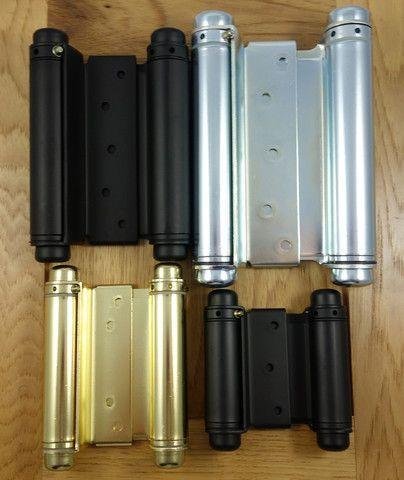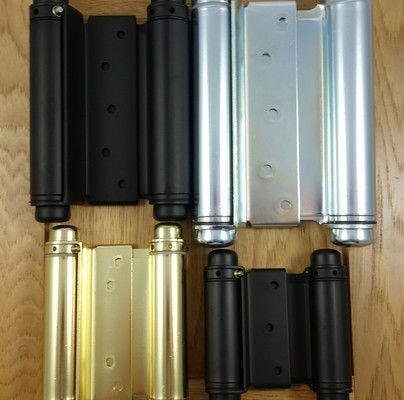
If you’re in the market for new door hinges, you’ll notice various finishes available, each with its own set of pros and cons. You might be wondering, does the finish really matter for durability? The answer is a resounding yes! The right choice can make a huge difference in how long your hinges last and how well they perform. Let’s dive into the different types of door hinge finishes and compare their durability so you can make an informed decision.
Understanding Door Hinge Finishes
Before we jump into specific finishes, let’s clarify what a door hinge finish entails. Essentially, it refers to the outer layer on the hinge that affects not only how it looks but also how it stands up against wear and tear. Picture it like the skin of an apple—some skins are tougher and protect the fruit better than others. Similarly, hinge finishes can significantly affect a hinge’s resistance to rust, corrosion, and scratches.
Hinge finishes generally fall into two categories: plated and coated. Plated finishes are usually achieved through a process called electroplating, where a metal layer is deposited on the hinge. Coated finishes are made by applying a layer of paint or other protective substance. Understanding these categories helps in comparing how different finishes hold up over time.
Oil-Rubbed Bronze
Oil-rubbed bronze is a popular choice for homeowners looking for a rich, dark finish. It has a unique, aged look that can add character to your doors. But let me explain the durability side of things. Oil-rubbed bronze hinges are usually made of brass and then coated with a dark finish. This finish can wear down over time, exposing the brass underneath, which can be an aesthetic concern for some.
When it comes to durability, oil-rubbed bronze can resist moisture better than some other finishes, making it a solid choice for interior doors or sheltered outdoor doors. If you’re considering this finish, keep in mind that it may require occasional touch-ups to maintain that beautiful color.
Stainless Steel
Stainless steel hinges are like the workhorses of the hinge world. Known for their strength and resistance to rust, they’re often found in high-traffic areas or places where durability is key. Unlike oil-rubbed bronze, stainless steel doesn’t easily corrode, making it perfect for exterior doors or humid environments.
The beauty of stainless steel lies in its simple, modern aesthetic. Plus, it’s relatively low-maintenance. You might be wondering if they scratch easily—while they can show fingerprints or scratches, many people find that a quick wipe-down can keep them looking fresh. If long-lasting performance is what you’re after, stainless steel hinges are hard to beat.
Brass
Brass door hinges have a classic charm that can grace any door with elegance. They’re often used for interior doors and come in various finishes, like polished or satin. However, the durability of brass hinges can be a mixed bag. While they resist wear fairly well, brass is susceptible to tarnishing over time, especially if exposed to moisture.
For those living in humid climates, straight brass may not be the best choice. You could opt for a lacquered brass finish, which adds a protective layer, but even that may wear off with time. If you love the aesthetic but want to ensure durability, consider pairing brass hinges with a finishing spray to help prolong their life.
Polished Chrome
Polished chrome hinges are like the shiny shoes of the hinge family—they look impressive but can be pretty slippery when it comes to durability. The reflective finish offers a sleek and modern look that many homeowners adore. But, similar to brass, polished chrome can be prone to scratching and may lose its shine with wear.
In terms of moisture resistance, polished chrome fares moderately well, but it’s not impervious to rust if the finish gets damaged. If you choose polished chrome, be prepared for occasional cleaning to keep them looking their best. They work great in a dry setting, but if you’re in an area prone to humidity, you might want to reconsider.
Satin Nickel
Satin nickel is another popular choice because of its soft, muted finish that blends seamlessly with most décor. It’s often chosen for modern homes and provides a nice contrast to darker woods. The durability of satin nickel is one of its strong suits; it’s resistant to fingerprints and smudges, making it easy to maintain.
In terms of longevity, satin nickel is coated and typically performs well in a variety of environments. However, if scratched, the underlying metal can show through, which may not be as appealing. Still, if you’re aiming for a chic yet sturdy option, satin nickel could be right up your alley.
Comparing Durability of Different Finishes
Now that we’ve explored different finishes, let’s lay out a simple comparison. Here’s how they stack up in terms of durability:
| Hinge Finish | Durability | Moisture Resistance | Maintenance |
|---|---|---|---|
| Oil-Rubbed Bronze | Moderate | Good | Occasional touch-ups |
| Stainless Steel | High | Excellent | Low |
| Brass | Moderate | Fair | Regular polishing |
| Polished Chrome | Moderate | Good | Regular cleaning |
| Satin Nickel | High | Good | Low |
This table gives you a quick snapshot, making it easier to see which finish might suit your needs best.
Choosing the Right Finish for Your Needs
Choosing the right door hinge finish really boils down to understanding your environment and aesthetic preferences. If you’re in a humid area, go for stainless steel or satin nickel. But if you want something that adds warmth and character, oil-rubbed bronze or brass might appeal more.
Remember to consider where these hinges will be used. For front doors, durability is key, while internal doors may prioritize looks. Think about maintenance too—do you want something that requires a lot of care, or is low-maintenance more your style?
Ultimately, it’s about balance. You want your hinges to blend well with your home’s style while standing up to the rigors of daily use. Pay attention to both the aesthetic and the practical aspects, and you’ll find a finish that works for you.
As you can see, choosing the right door hinge finish isn’t just about style; it’s a decision that impacts both the durability and overall function of your doors. No matter which finish you choose, make sure it aligns with your lifestyle and needs. That way, you can enjoy functional hinges that look great and last for years to come.
